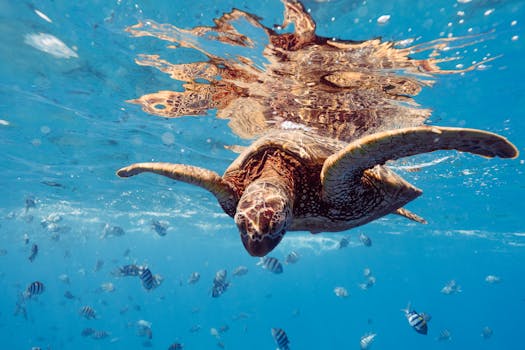Tips for Amateur Divers
Exploring the underwater world is a thrilling experience that offers a unique glimpse into marine life and ecosystems. For amateur divers, the excitement of strapping on gear and descending into the water can also come with uncertainty and challenges. Proper preparation and understanding are essential for ensuring both safety and enjoyment during dives. From selecting the right equipment to mastering basic techniques, there’s much to learn before venturing beneath the surface. With some guidance, beginner divers can build confidence and develop skills that will enhance their underwater adventures.
Choosing the Right Gear
Your diving experience begins with selecting the right equipment, as this directly impacts your safety and comfort underwater. For beginners, investing in high-quality, well-fitted gear is crucial. The basics include a mask, snorkel, fins, wetsuit or drysuit (depending on water temperature), buoyancy control device (BCD), regulator, and dive computer.
When purchasing a mask, ensure it fits snugly without causing discomfort. A good seal prevents water leakage, which can be distracting during your dive. Similarly, fins should fit securely to avoid blisters while providing efficient movement through the water. Lightweight open-heel fins are a great choice for beginners who plan to dive in varied conditions.
A dive computer is another essential tool that helps you monitor depth, time spent underwater, and ascent rates. Many modern dive computers offer intuitive interfaces tailored to new divers. You don’t need the most advanced model; instead, look for reliability and ease of use.
While it might be tempting to rent equipment to save costs initially, owning your gear ensures familiarity and reliability over time. If renting is necessary, always inspect the equipment thoroughly and seek advice from experienced staff at reputable dive shops.
Learning Basic Techniques
Before diving into open water, every amateur diver must master basic skills and techniques. These are typically taught during entry-level certification courses such as PADI Open Water Diver or SSI Open Water Diver programs.
One critical skill is achieving neutral buoyancy. This allows divers to hover effortlessly underwater without sinking or floating uncontrollably. Practice using your BCD and breath control to adjust buoyancy effectively. This method not only conserves energy but also minimizes the likelihood of accidentally disrupting sensitive marine environments.
Another essential technique is equalizing pressure in your ears during descent. Failing to do so can lead to discomfort or even injury. Divers often use the Valsalva maneuver (pinching their nose and gently blowing) to equalize ear pressure gradually.
Understanding underwater communication signals is vital since verbal communication isn’t possible while diving. Learn the hand gestures used for typical situations, such as signaling "OK," indicating "trouble," or showing "low air." Rehearse these signals with your diving partner prior to each dive to promote effective communication.

Planning Safe Dives
Safety is paramount for any diver, especially amateurs who may still be building confidence in their abilities. Thorough planning before each dive minimizes risks and ensures an enjoyable experience.
The first step in planning involves assessing environmental conditions such as water temperature, currents, visibility, and potential hazards like jellyfish or sharp corals. Check weather forecasts regularly when diving in open waters; sudden changes can create challenging situations even for experienced divers.
Divers should always adhere to the "buddy system." Having a reliable partner provides an extra layer of safety in emergencies such as equipment failure or unexpected disorientation underwater. Make sure both you and your buddy review emergency procedures beforehand.
Using dive tables or a dive computer helps manage nitrogen levels in your body effectively, critical for avoiding decompression sickness (commonly known as “the bends”). Adhere to the suggested guidelines regarding both the intensity and length of your workouts, considering your current fitness level.
| Depth (Feet) | Maximum Dive Time (Minutes) |
|---|---|
| 30 | 200 |
| 50 | 80 |
| 100 | 20 |
| 130 | 10 |
Respecting Marine Life
Diving offers a chance to witness incredible biodiversity up close; It’s important to interact responsibly with underwater environments. Amateur divers must understand their role in preserving fragile marine ecosystems.
Avoid touching or disturbing marine life as much as possible. Many species are sensitive to human interaction, which can cause stress or even harm them physically. Coral reefs are particularly delicate; even slight contact can damage their structures or introduce harmful bacteria from human skin oils.
If you plan on taking photographs while diving, practice maintaining neutral buoyancy beforehand so you don’t accidentally bump into reefs or other underwater features while focusing on capturing the perfect shot.
- Dispose of waste properly, never leave trash behind after dives.
- Avoid collecting souvenirs like shells or corals from natural habitats.
- Encourage sustainable travel choices by opting for operators committed to conservation efforts.
The Final Word on Diving Preparation
The thrill of exploring underwater realms is unparalleled for those who take the plunge into recreational diving. Equipping yourself with the right equipment, honing essential skills through widely available training programs like PADI, and carefully preparing for each adventure while prioritizing the protection of marine environments will lead to safer and more rewarding underwater experiences. Engaging in responsible diving promotes eco-friendly practices that protect our seas and creates a legacy for those who come after us. By remaining vigilant and continuously enhancing our approaches, we can collaboratively nurture a vibrant community that appreciates and protects our water ecosystems, safeguarding their health for future generations.